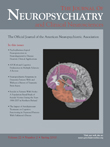Long-Term Treatment and Relapse Prevention of Alcohol and Benzodiazepine Dependence with Lamotrigine
To the Editor: Glutamate is the primary excitatory neurotransmitter in the CNS. The N -methyl- d- aspartate (NMDA) glutamate receptor subtype is also inhibited by ethanol and may be one of the primary molecular targets for its action in the brain. 1 – 4 Chronic inhibition of NMDA receptor function by repeated ethanol exposure induces an up-regulation of various NMDA receptor subunits. 5 When chronic alcohol administration ceases, NMDA receptors remain upregulated, and the resulting excessive glutamate-induced excitation may contribute to the hyperexcitatory symptoms of alcohol withdrawal. 6 Lamotrigine is an anticonvulsant that inhibits voltage-gated Na+ and Ca2+ channels and thereby prevents the release of various neurotransmitters, including glutamate. 7 , 8 A previous report by Krupitsky et al. 9 showed beneficial effects of lamotrigine as an aid in detoxification and as a treatment for dependence in bipolar patients with dual diagnosis (comorbid alcohol dependence). 10 Herein I report what is to my knowledge the first case report on the use of lamotrigine in alcohol and benzodiazepine withdrawal and dependence in a nonbipolar patient.
Case Report
Mrs. N is a 45-year-old woman who was diagnosed with alcohol and benzodiazepine dependence according to DSM-IV criteria and had a 5-year history of alcohol and benzodiazepine addiction at the time she was referred to our clinic. She experienced nightly insomnia and, during the previous 2 weeks, persistent vomiting. She presented with severe withdrawal symptoms, manifested as constant nausea and vomiting, extensive sweating, tactile disturbances on her scalp in the form of “electric cap,” and severe tremor. Her Clinical Institute Withdrawal Assessment of Alcohol Scale, Revised (CIWA) 11 score was 38, and her Severity of Dependence score was 9 for alcohol (cutoff for dependence is 3) and 12 for benzodiazepines (cutoff 7). 12 Her alcohol craving score according to the Penn Alcohol craving scale was 25 (maximum score 30). 13
She agreed to undergo diazepam withdrawal to be followed by continuous topiramate treatment, with the target dose of 300 mg/day. She underwent 5-day diazepam detoxification which led to marked improvement in nausea and vomiting and a CIWA score of 20, making her very motivated to start on the new drug. After 2 days on topiramate, 100 mg/day, she experienced intensive dizziness. Both systolic and diastolic pressure had decreased by 20 mm/Hg and her resting pulse was 40 bpm (versus her usual 80 bpm); she also complained of new bruises which were 2–3 cm in diameter and mainly on her lower body.
As it was judged that all these new symptoms and signs might be induced by topiramate according to the manufacturer’s instructions on safety (bradycardia and drop in arterial pressure) 14 and bruises as problems in coagulation and effect of topiramate on platelet function, 15 it was decided to slowly taper it down and to initiate lamotrigine, which was uptitrated according to manufacturer’s instructions to a final dose of 200 mg/day. During the next 2 weeks of full dosage treatment, she reported moderate improvements, which correlated with a decrease on her CIWA score. The symptoms continuously diminished during the following weeks, and after 16 weeks of active treatment, during the last assessment, she was only mildly anxious, with moist palms and moderate tremor (CIWA score <10) and Severity of Dependence score of 2 for alcohol and 4 for benzodiazepines. She also reported complete abstinence during the aforementioned period, while her Penn Alcohol craving score decreased to 12.
Discussion
In conclusion, I would like to suggest that lamotrigine might be a reasonable choice of antiepileptic drug for the long-term treatment of alcohol and benzodiazepine dependence. However, in my view it should not be used as detoxification agent, owing to the need to titrate it to therapeutic levels over several weeks. My suggestion would be to simultaneously use benzodiazepines as detoxification agent, and start long-term lamotrigine treatment in order to reduce remaining withdrawal symptoms following detoxification and prevent symptoms of relapse and dependence. My data suggest 200 mg/day as a reasonable target dose. Placebo-controlled trials are needed to test this hypothesis.
1. Gonzahles RA, Jaworski JN: Alcohol and glutamate. Alcohol Health Res World 1997; 21:120–127Google Scholar
2. Littleton J: Neurochemical mechanisms underlying alcohol withdrawal. Alcohol Health Res World 1998; 22:13–24Google Scholar
3. Lovinger DM, White G, Weight FF: Ethanol inhibits NMDA activated ion current in hippocampal neurons. Science 1989; 243:1721–1724Google Scholar
4. Lovinger DM, White G, Weight FF: Ethanol inhibition of neuronal glutamate receptor function. Ann Med 1990; 22:247–252Google Scholar
5. Tsai G, Gastfriend D, Coyle JT: The glutamatergic basis of human alcoholism. Am J Psychiatry 1995; 152:332–340Google Scholar
6. Hu XJ, Follesa P, Ticku MK: Chronic ethanol treatment produces a selective upregulation of the NMDA receptor subunit gene expression in mammalian cultured cortical neurons. Brain Res Mol Brain Res 1996; 36:211–218Google Scholar
7. Landmark CJ: Targets for antiepileptic drugs in the synapse. Med Science Monitor 2007; 13:1–7Google Scholar
8. Rogawski MA, Loscher W: The neurobiology of antiepileptic drugs. Nat Rev Neurosci 2004; 5:553–564Google Scholar
9. Krupitsky EM, Rudenko AA, Burakov AM, et al: Antiglutamatergic strategies for ethanol detoxification: comparison with placebo and diazepam. Alcohol Clin Exp Res 2007; 31:604–611Google Scholar
10. Rubio G, Lopez-Munoz F, Alamo C: Effects of lamotrigine in patients with bipolar disorder and alcohol dependence. Bipolar Disord 2006; 8:289–293Google Scholar
11. Sullivan JT, Sykora K, Schneiderman J, et al: Assessment of alcohol withdrawal: the revised Clinical Institute Withdrawal Assessment for Alcohol Scale (CIWA-Ar). Br J Addiction 1989; 84:1353–1357Google Scholar
12. Gossop M, Darke S, Griffiths P, et al: The Severity of Dependence Scale (SDS): psychometric properties of the SDS in English and Australian samples of heroin, cocaine and amphetamine users. Addiction 1995; 90:607–614Google Scholar
13. Flannery BA, Volpicelli JR, Pettinati HM: Psychometric properties of the Penn Alcohol Craving Scale. Alcohol Clin Exp Res 1999; 23:1289–1295Google Scholar
14. Drugs.com: Safety instructions on topiramate. 2008. Available at www.drugs.com/ppa/topiramate.htmlGoogle Scholar
15. Page RL II, Bainbridge JL: Intractable epistaxis associated with topiramate. Ann Pharmacother 2006; 40:1462–1465Google Scholar



